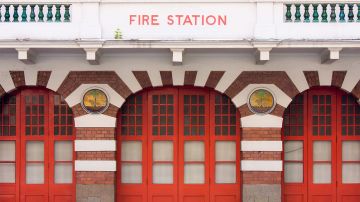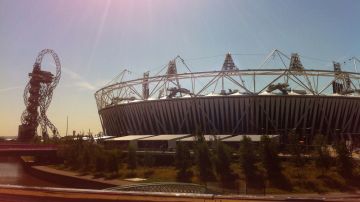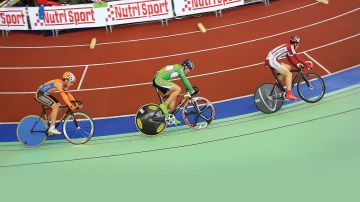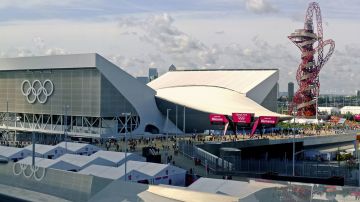INEOS’ big goal for this year had been to refinance the remainder of its borrowing when the time was right. Never one to miss an opportunity, INEOS deemed the time was right in April. And it seems others couldn’t agree more.
INEOS made history in the financial world in April
Buoyed by the markets’ response at the end of January to what it could offer investors, it went back as planned to refinance the remainder of its borrowing and achieved the largest-ever covenant-lite loan for a European company and the largest globally since the credit crunch began in 2008.
“It was a staggering achievement by the company,” said Michael Moravec, head of European high-yield syndicate and co-head of EMEA leveraged finance origination at Barclays, global co-ordinators of the financing alongside JPMorgan.
“It eliminated all INEOS’ near-term maturities, took refinancing risk off the table and converted its entire debt structure away from maintenance covenants to simple incurrence covenants.”
He said the upshot of that – maintenance covenants are much more onerous for companies, especially in cyclical sectors such as chemicals – is greater freedom and flexibility for INEOS to operate.
“Management can now concentrate on what it does best, which is managing a chemicals business,” he said.
Elsewhere, reaction to the refinancing package was equally as positive.
Euroweek, the leading weekly newspaper for the global capital markets, said INEOS had shown its clout as a borrower.
“INEOS was able to switch at the last moment to where the pricing was keenest,” Oliver West, a leverage finance reporter, wrote in an article published at the end of April.
But it was also about timing, as INEOS Finance Director John Reece had forecast when he spoke to INCH magazine in March, after INEOS successfully refinanced a large chunk of its borrowing in January – a year before it needed to.
“You really have to take advantage of the credit markets when they are there because they are very cyclical,” he said.
Malcolm Stewart, a partner at Ondra Partners, a long-standing adviser to INEOS, said the timing had been perfect.
“They nailed it,” he said.
“The initial deal had been so robustly received by the markets at the end of January that INEOS went back to the markets very quickly.”
INEOS also knew the window of opportunity offered by the markets would not be open for very long – and management was right.
Within a month, interest rates had risen by 1%.
“When you are talking about a $3.8 billion refinancing deal, it’s a lot of money, which could be invested elsewhere in the business,” said Malcolm, who described the April deal as the ‘happy culmination’ of four years’ work.
The revival in covenant-lite loans follows the search for ‘yield’ in corporate debt. With interest rates at an all-time low, investors want more for their money and borrowers want more leeway given the unpredictability of the global economy. Covenant-lite loans, which strip away some of the restrictions for companies, offer both.
In April, INEOS Group held investor days in London and New York. CEOs from each of the businesses gave detailed information on performance and markets to give investors the opportunity to fully understand the company. It wanted to refinance its senior credit facilities – and extract the best terms – and to do so, it simply made best use of competing demand between US and Euro investors in high-yield bonds and loans.
“The company initially came out with $1.5 billion in loans and $2.2 billion in bonds,” said Malcolm.
“But every investor in the world knows the strength and depth of the US high-yield bond market and that it could have absorbed the entire refinancing.
“So, initially showing a large high-yield bond gave every incentive to loan investors to submit large orders on tight terms.”
In a smart move, INEOS surprised the market – almost at the 11th hour – by dropping the Euro high-yield bond component completely and reducing the US high-yield bond to just $775 million.
Instead, it raised a $2 billion six-year, covenant-lite leveraged loan, a $375 million three-year covenant-lite loan and, the biggest surprise of all, a $500 million six-year covenant-lite leveraged loan.
And there was more good news to come.
INEOS’ successful refinancing also helped to improve its credit rating.
Standard & Poor’s upgraded it from a B to B with a ‘positive’ outlook.
“The rating actions reflect our view of INEOS’ resilient operating performance in recent quarters,” said Oliver Kroemker, associate director and credit analyst at Standard & Poor’s.
And Moody’s Investors Service also changed its outlook on INEOS to positive. It said the refinancing would give INEOS more financial freedom, thanks to the removal of the covenant restrictions.
Most of INEOS’ borrowing stems from 2005 when it took out a series of loans to buy Innovene from BP and many of those loans are now coming to maturity.
John said INEOS could have looked for finance in the equity market instead of the debt market, but chose not to.
“The difference is that one gives INEOS control; the other doesn’t,” he said.
Malcolm said he understood INEOS’ reluctance to be anything other than a privately-owned company.
“Public equity is not in INEOS’ DNA,” he said.
“When you give the public shares, you give them votes and rights in how a company is managed.
“As it stands, INEOS can manage its affairs, through the ups and downs of the chemicals’ cycle, in a way that best suits the company and its long-term needs, without having to worry about shareholders’ shorter-term requirements.”
INEOS Group second quarter trading
INEOS suffered a slowdown in the second quarter of 2012 – after an impressive start to the year.
The Group reported that its earnings (EBITDA) for the second quarter were €308 million compared to €576 million (a quarterly record) for the same quarter last year – and down €157 on this year’s first quarter.
Finance Director John Reece said “Before this INEOS had actually enjoyed a fairly strong April but the impact of steeply declining oil prices – the price fell from $123 per barrel to $94 during the quarter – adversely affected May and June’s historical cost results.”
It meant that non-cash inventory holding losses of about €141 million were incurred during the second quarter, mainly in the Olefins & Polymers businesses.
Chemical Intermediates reported EBITDA of €119 million compared to €267 million in the second quarter last year and €233 million for quarter one. Lower feedstock prices – combined with the general macro- economic uncertainty – had influenced sentiment in the chemical Intermediates businesses.
INEOS Phenol was one of the better performers. The heavy industry turnaround schedule had maintained a strong supply side influence, which had led to healthy margins and volumes.
And INEOS Oligomers also experienced steady demand and solid margins in all sectors.
Volumes and margins for INEOS Nitriles, continued to be relatively weak, with subdued demand for acrylic fibre and ABS in the Far East and Europe.
Meanwhile, INEOS Oxide’s performance was mixed. The demand for ethylene oxide in Europe held up but it had been offset by slow demand for glycols, especially in Asia.
INEOS Olefins & Polymers North America reported EBITDA of €132 million compared to €163 million for the same quarter last year and €175m compared to Q1. The business had continued to benefit from the use of cheaper gas feedstock, which meant it could maintain good margins, and resulting in another record quarterly performance (before inventory holding losses).
The American cracker business environment continued to strengthen with lower feedstock costs, boosting cracker operating margins during the quarter. And Polymer demand remained solid overall, with derivative exports filling the gap from weaker domestic demand as gas crackers remain very competitive globally. One of the crackers at Chocolate Bayou had a scheduled turnaround during the quarter, which was completed successfully.
INEOS Olefins & Polymers Europe reported EBITDA of €57 million compared to €146 million for the same quarter last year and €57 million compared to Q1. Demand for olefins was moderate, with butadiene continuing to perform well. The large decreases in naphtha prices led to healthy cracker margins throughout the second quarter. But volumes had decreased with some customers destocking. The cracker at Rafnes, Norway, completed a major scheduled turnaround during the second quarter. Polymer demand was subdued, though, as customers anticipated lower prices in the wake of weakening oil and naphtha prices. Softness in the commodity polymer markets also resulted in low margins.
In May 2012 the Group successfully issued $775 million Senior Secured Notes due in 2020 and a new Senior Secured Term Loan totalling $3,025 million. The net proceeds had been used to repay all of the remaining indebtedness under the Senior Facilities Agreement, together with accrued PIK interest and associated issue costs.
John said INEOS Group would continue to focus on cash management and liquidity.
INEOS’ net debt was €6.55 billion at the end of June 2012. Cash balances at the end of the second quarter were €1,247 million, and availability under undrawn working capital facilities was €200 million. Net debt leverage was around 4.9 times as at the end of June 2012.














